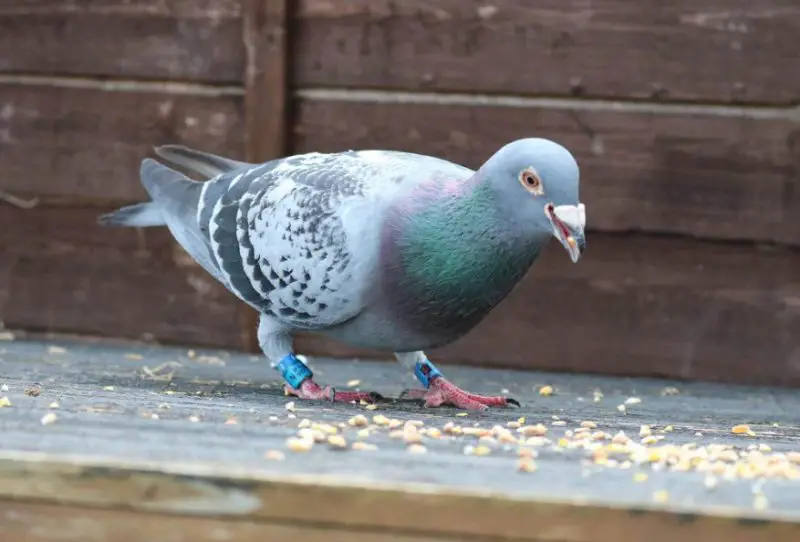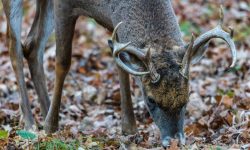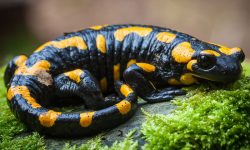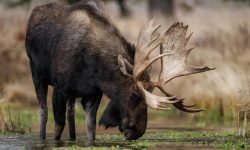Pigeons are among the most adaptable birds in the world, thriving in both wild landscapes and busy urban centers. Their ability to survive in forests, grasslands, farms and city streets comes from a diet that is flexible, diverse and surprisingly nutrient-rich. Understanding what pigeons eat reveals how they have managed to coexist with humans for thousands of years while still maintaining natural instincts shaped by their wild ancestors.
Wild pigeons rely on a combination of seeds, grains, fruits and small invertebrates. Their feeding habits reflect seasonal changes, habitat availability and the nutritional demands of flight. Pigeons have strong, muscular gizzards that grind food efficiently, allowing them to eat harder seeds than many other bird species. Their diet also plays a major role in their breeding success, feather quality and overall lifespan.
This detailed guide explores 20 foods pigeons eat in the wild, offering insight into how these birds forage, what fuels their long flights and why their natural diet is far more balanced than what most people assume.
Understanding the Pigeon Diet

Pigeons are primarily granivores, meaning seeds and grains form the foundation of their diet. However, they are also opportunistic feeders capable of eating fruits, plant matter and small insects when necessary. Their digestive system is built to handle tough seeds through the help of grit—tiny stones pigeons swallow to grind food internally.
Wild pigeons forage using sharp eyesight, searching the ground for edible plants or climbing onto shrubs and low branches to pluck seeds and fruits. Their diet shifts seasonally. During spring and summer, they eat more green vegetation and insects to support breeding and chick feeding. In fall and winter, they rely more heavily on dry seeds and hardy grains that persist in the landscape.
Pigeons also feed their young a unique substance called crop milk, a nutrient-dense secretion produced by both parents. Producing this milk requires a high-energy diet, making wild foods especially important during nesting seasons.
20 Foods Pigeons Eat in the Wild
1. Wild Grass Seeds
Wild grass seeds are one of the most important foods for pigeons. These seeds fall naturally from mature grasses, creating plentiful feeding grounds in fields and open meadows.
Pigeons forage by walking along the ground, pecking quickly at scattered seeds. Their beaks are perfectly shaped for picking up tiny grains efficiently. Grass seeds offer carbohydrates that fuel long flights and daily activity.
During summer and early fall, wild grass seeds become a primary energy source that sustains flocks of pigeons as they travel across open landscapes.
2. Millet
Millet grows in wild patches across many regions, providing a rich, protein-packed seed that pigeons eagerly consume. Its small size makes it easy for pigeons to pick up and digest.
Millet supplies essential amino acids that support feather health and muscle development. Because it grows densely, pigeons often find entire clusters of millet in natural meadows or abandoned farmland.
This seed becomes especially important during breeding season when adults need more protein.
3. Wheat Grains
Wheat grains are among the most nutrient-dense foods pigeons encounter in agricultural landscapes. When farms harvest or spill grain, pigeons gather in large numbers to feed.
These grains offer carbohydrates and minerals that sustain pigeons through migrations or long-distance flights. Their sturdy composition allows pigeons to store energy gradually rather than burning it immediately.
Wheat remains a year-round food source wherever agricultural activity exists.
4. Corn Kernels
Corn is a high-energy grain that pigeons eat whenever it is available. Though wild pigeons rarely access whole kernels in nature, they frequently find broken or dried corn pieces in harvested fields.
Corn provides dense calories that help pigeons remain active even in cold conditions. It is especially useful during winter when other foods become scarce.
The bright color and strong scent of corn make it easy for pigeons to locate from a distance.
5. Barley
Barley grows in grain fields and wild farmlands, offering a nutrient-rich food for pigeons. Its husks provide fiber while the grain itself supplies sustainable energy.
Pigeons consume barley by stripping seeds from stalks or scavenging post-harvest leftovers. Barley’s balanced nutrition helps support flight endurance and reproductive fitness.
It becomes an essential cold-season grain because it remains edible even after frost.
6. Acorns (Broken Pieces)
In forested areas, pigeons occasionally feed on small acorn fragments. Whole acorns are too large, but pigeons readily eat pieces broken by squirrels or natural weathering.
Acorns contain natural fats and carbohydrates that help strengthen pigeons before winter. Their earthy taste encourages pigeons to forage beneath oak trees during fall.
This food source is seasonal but valuable when energy demands increase.
7. Pine Nuts
Pine nuts fall from cones in conifer forests and provide a rich, oily seed that pigeons love. These nuts contain essential fats that improve feather insulation and flight stamina.
Pigeons crack open soft cones to reach the seeds or pick loose nuts from the forest floor. Because pine nuts are energy-dense, they support pigeons during cold spells or long flights.
Their availability depends on seasonal cone production, which varies yearly.
8. Berries
Wild berries such as elderberries, blackberries and serviceberries offer pigeons hydration, antioxidants and natural sugars. Pigeons pluck berries directly from shrubs or eat those dropped on the ground.
These fruits help balance the seed-heavy diet pigeons typically follow. Their high moisture content supports hydration in warm months.
Berries also supply vitamins that strengthen immunity and overall health.
9. Wild Fruit Pieces
In some regions, pigeons eat small fruit pieces that fall from trees—apples, pears or soft forest fruits. They prefer bruised or partially broken pieces that are easy to peck apart.
These fruits enhance hydration, provide natural sugars for energy and diversify the diet. During late summer, fruit-rich feeding grounds attract large pigeon groups.
Though not their primary food, fruit plays a valuable seasonal role.
10. Clover Seeds
Clover grows abundantly in fields and grasslands. Its tiny seeds drop in clusters, creating ideal feeding patches for pigeons.
These seeds offer mild protein amounts and important trace minerals. Pigeons often forage clover patches in early summer when seed production peaks.
Clover seeds are easy to digest, making them suitable for young pigeons learning to forage independently.
11. Ragweed Seeds
Ragweed plants produce thousands of small seeds that pigeons consume eagerly. These seeds remain available well into winter, long after other vegetation dies back.
Their dry, lightweight texture allows pigeons to digest them efficiently. Ragweed seeds contain concentrated nutrients that support pigeons during harsh seasons.
In many habitats, ragweed becomes one of the last available foods of the year.
12. Sunflower Seeds (Wild Type)
Wild sunflower seeds are compact and nutrient-rich. Pigeons crack the outer shell with their beaks to reach the kernel inside.
These seeds provide healthy fats and protein, helping pigeons maintain good feather condition. During late summer and fall, wild sunflower patches attract flocks of pigeons.
Their calorie density makes them excellent for supporting long-distance flight.
13. Thistle Seeds
Thistle plants produce soft, downy seed tufts that pigeons locate easily. These seeds are small but rich in minerals and oils.
Pigeons may eat them directly from the plant or pick them from dry ground. Thistle seeds help maintain energy during breeding and molting seasons.
Their long-lasting availability benefits pigeons in open countryside habitats.
14. Insects
Though granivores, pigeons supplement their diet with insects—especially during breeding season. They catch beetles, ants, aphids and other small insects from grass stems or soil.
Insects supply essential protein that pigeons need for muscle repair and chick feeding. Young pigeons benefit greatly from this protein boost.
During spring, insects help pigeons recover from winter nutritional gaps.
15. Earthworms
After rainfall, pigeons forage for earthworms along open soil. Their sharp eyesight helps them spot movement near the ground surface.
Earthworms contain high moisture and protein, making them valuable supplements. Though not eaten in large quantities, they provide targeted nutrition.
Earthworm feeding is more common in rural or forest-edge habitats.
16. Snails (Small)
Small snails and slugs appear in moist environments, and pigeons consume them occasionally for extra calcium and minerals.
Pigeons break the thin shells and extract soft bodies using quick pecks. Snails are especially helpful for female pigeons before and after egg laying.
This food source is opportunistic and seasonal.
17. Plant Sprouts
New sprouts from grasses, wildflowers and shrubs offer soft, nutrient-packed vegetation. Pigeons nibble sprouts during early spring when seeds have not yet formed.
Sprouts contain chlorophyll, vitamins and moisture, supporting recovery after winter. They also help pigeons diversify their diet beyond dry grains.
These tender shoots become essential when pigeons need rapid nutrient replenishment.
18. Leafy Greens (Wild)
Pigeons eat small amounts of wild greens such as chickweed, dandelion leaves and tender clover. These greens are soft, easy to digest and full of hydration.
Leafy greens help pigeons balance a seed-heavy diet by providing vitamins and digestive support. During warm seasons, pigeons graze in patches of young plants.
Greens are especially helpful for hydration and nutrient absorption.
19. Tree Buds
Tree buds are packed with concentrated nutrients that pigeons eat during late winter and early spring. Buds contain sugars, oils and vitamins needed for new plant growth.
Pigeons forage buds from low branches or fallen twigs. These buds help pigeons maintain energy when seeds become limited.
They are particularly useful before spring vegetation becomes abundant.
20. Grit and Small Stones
While not a food in the nutritional sense, grit is essential for pigeon digestion. Pigeons swallow tiny stones that settle in the gizzard to grind food.
Without grit, pigeons cannot break down hard seeds properly. Natural grit includes sand, fine gravel and crushed shell fragments.
Grit supports nutrient absorption and overall digestive efficiency.
FAQs About What Do Pigeons Eat
What do pigeons eat most in the wild?
Mostly seeds and grains, especially grass seeds, millet and wheat.
Do pigeons eat insects?
Yes, especially during breeding season when they need extra protein.
Do pigeons eat fruits?
They eat berries and soft fruit pieces when available.
Do pigeons need grit?
Yes. Grit is essential for grinding seeds in the gizzard.
Can pigeons eat human food?
Wild pigeons can, but it is not natural or healthy for them.
Why do pigeons eat seeds?
Seeds provide the carbohydrates and fats needed for flight and daily movement.
Do pigeons drink water often?
Yes. They sip water regularly and can even suck water through their beaks.
Are pigeons herbivores?
Primarily, but they are technically omnivores due to insect consumption.
Do pigeons forage alone or in groups?
Both, but they often forage in flocks for safety and efficiency.
Do seasons change what pigeons eat?
Yes. They eat more greens and insects in spring, more seeds in fall and winter.
Final Thoughts
Pigeons thrive because their diet is adaptable, diverse and nutritionally balanced. By eating seeds, grains, fruits, greens and occasional insects, they support the high energy demands of flight, nesting and survival in a range of environments. Understanding what pigeons eat offers deeper insight into why these birds remain successful in both natural and urban settings. Their natural foraging habits show that pigeons are far more resourceful and ecologically important than many people realize.






